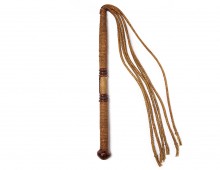“After a considerable degree of conversation”
Knox has just called off his deal with George Palmer of Stillwater to supply eighty pair of oxen to transport heavy cannon into Massachusetts.
Palmer was in his late fifties. Born in Connecticut, he had bought mills and other real estate in Stillwater in 1764 and become a big man in that town. He didn’t like being dismissed, as shown by the letter I quoted yesterday.
Since we have only one side of the correspondence, we don’t know if Knox had revealed that he’d canceled the deal on a direct order from Gen. Schuyler, who insisted he’d started making his own arrangements for moving the cannon.
Schuyler was in his mid-forties, scion of a family of Dutch landowners in Albany. He was a big man in the whole colony. He’d been elected to the Second Continental Congress and then appointed a general of the Continental Army in charge of the Northern Department.
In between those two local bigwigs was Knox, a twenty-five-year-old from Boston who hadn’t yet received his official commission as colonel. He was following orders direct from Gen. George Washington, but that mentor was very far away.
On the afternoon of 26 December, Knox reached Schuyler’s house. Evidently he persuaded the general to at least talk with Palmer. The next day Knox wrote in his journal: “Sent off for Mr Palmer to Come immediately down to Albany.”
On 28 December Knox recorded the result of that meeting:
Mr Palmer Came Down & after a considerable degree of conversation between him & General Schuyler about the price the Genl Offering 18/9. & Palmer asking 24/. P[er] day for 2 Yoke of Oxen the treaty broke off abrubtly & Mr Palmer was dismiss’dIt seems clear from the way Knox described that long conversation as between Palmer and Schuyler that he was left out—perhaps he even wanted to be left out. We don’t know what price he had offered Palmer and thus how that fit into this conversation. Did Schuyler bargain Palmer down, or did Palmer insist on sticking to the original deal?
Authors describe Knox scrapping his initial plan to use Palmer’s oxen as purely a matter of cost. That makes the situation seem entirely reasonable, especially on the part of the men commemorated with statues—Schuyler and Knox. But Schuyler had told Knox to dismiss Palmer more than a week before this sit-down, before he knew anything about prices.
That suggests Schuyler made his decision on something besides 5s.3d per day. He and Palmer might have been rivals for influence in the county. He might have assumed Palmer wouldn’t offer the best price. He might have felt he’d sunk too much money into his own preparations to stop now. The general might simply have wanted more control.
Whatever his motivation, on 29 December Schuyler sent his wagon master and other agents “to all parts of the County to immediately send up their slays with horses,” as Knox wrote. The price would be “12/. P[er] day for each pair of horses or £7. P[er] Ton for 62 miles.” At the end of the year the wagon master brought back a list of 124 teams. That number of horses would cost £74.8s. per day.
In contrast, Palmer had offered 80 yoke of oxen. Knox wrote that he ultimately quoted 24s. per day “for 2 Yoke of Oxen.” If that’s correct, using Palmer’s oxen would have cost £48 per day, considerably less than Schuyler’s arrangement. However, if Knox really meant that price to apply to each yoke of two oxen (the usual way of calculating), then Palmer was indeed asking for more than Schuyler.
There might well have been other costs and factors involved, such as the number of teamsters needed or how quickly the animals and equipment could be assembled. But whatever the details, it seems clear that Schuyler was making the decisions at this point, not Knox.
Indeed, Knox confided some worries about the final arrangement in his journal, meant for himself and perhaps for showing Gen. Washington later. On 31 December he wrote about the “Slays which I’m afraid are not Strong enough for the heavy Cannon If I can Judge from the sample Shewn me by Genl Schuyler.”
Nonetheless, those sleighs and those horses were what he had to work with.
TOMORROW: The wagon master.














